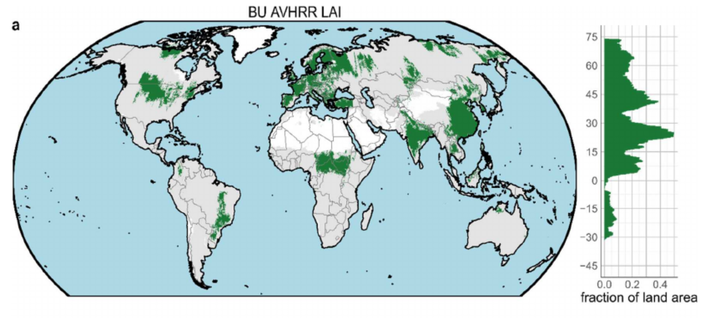Where Are Global Vegetation Greening and Browning Trends Significant?

Abstract
Global greening trends have been widely reported based on long-term remote-sensing data of terrestrial ecosystems. Typically, a hypothesis test is performed for each grid cell; this leads to multiple hypothesis testing and false positive trend detection. We reanalyze global greening and account for this issue with a novel statistical method that allows robust inference on greening regions. Based on leaf area index (LAI) data, our methods reduce the detected greening from 35.2% to 15.3% of the terrestrial land surface; this reduction is most notable in non-woody vegetation. Our results confirm several greening regions (China, India, Europe, Sahel, North America, Brazil, and Siberia), that are also supported by independent data products. We also report evidence for an increasing seasonal amplitude in LAI north of 35° N. Considering the widespread use of spatially replicated trend tests in global change research, we recommend adopting the proposed multiple testing procedure to control false positive outcomes.